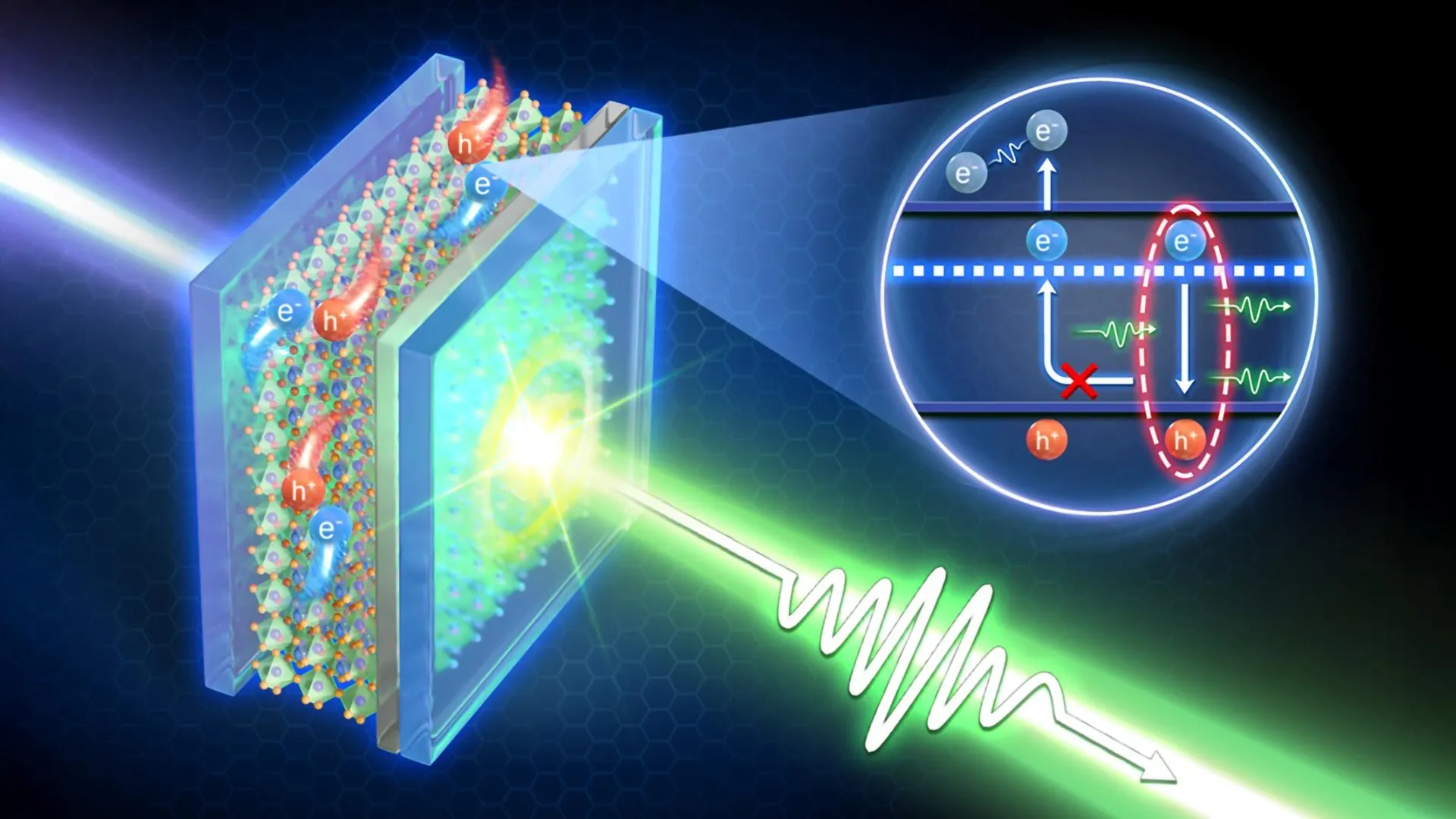A simple trick just made tiny lasers more powerful than ever
New processing method suppresses Auger recombination in perovskite films, enabling record-setting quasi-continuous-wave laser performance.
- Date:
- August 23, 2025
- Source:
- SPIE--International Society for Optics and Photonics
- Summary:
- Researchers at Zhejiang University have found a way to stop performance-killing Auger recombination in perovskite lasers, using a clever additive during processing. Their method produced a record-breaking laser with unprecedented efficiency, pointing toward chip-ready optical devices.
- Share:

For years, engineers have sought better ways to build tiny, efficient lasers that can be integrated directly onto silicon chips, a key step toward faster, more capable optical communications and computing. Today's commercial lasers are mostly made from III-V semiconductors grown on specialized substrates -- a process that makes them difficult and costly to combine with mainstream silicon technology. All-inorganic perovskite films have emerged as a promising alternative because they can be produced inexpensively, work with many substrate types, and offer strong optical properties. But one major obstacle has stood in the way: at room temperature, it has been difficult to get perovskite lasers to run in continuous or near-continuous modes without quickly losing their charge carriers to an effect known as Auger recombination.
A research team at Zhejiang University has now demonstrated a simple method to overcome this problem, leading to record-setting performance for perovskite lasers under near-continuous operation. As reported in Advanced Photonics, their approach uses a volatile ammonium additive during the annealing process of polycrystalline perovskite films. This additive triggers a "phase reconstruction" that removes unwanted low-dimensional phases, reducing channels that accelerate Auger recombination. The result is a pure 3D structure that better preserves the charge carriers needed for lasing, without adding significant optical loss.
To understand the improvement, the team analyzed how electrons and holes recombine under different pumping conditions. Auger recombination -- where energy from a recombining electron-hole pair is given to another carrier instead of emitted as light -- becomes especially problematic when the input light is delivered in longer pulses or continuous beams. In those situations, carrier injection occurs on a timescale similar to or longer than the Auger lifetime, leading to rapid carrier loss and preventing the build-up of population inversion needed for lasing. By suppressing this process, the researchers were able to sustain the carrier densities required for efficient stimulated emission.
With their optimized films, the team built a single-mode vertical-cavity surface-emitting laser (VCSEL) that achieved a low lasing threshold of 17.3 μJ/cm² and an impressive quality factor of 3850 under quasi-continuous nanosecond pumping. This performance marks the best reported to date for a perovskite laser in this regime.
The results point toward a practical route for making high-performance perovskite lasers that could work under true continuous-wave or electrically driven conditions -- key milestones for their integration into future photonic chips and potentially flexible or wearable optoelectronic devices.
Story Source:
Materials provided by SPIE--International Society for Optics and Photonics. Note: Content may be edited for style and length.
Journal Reference:
- Xinyang Wang, Guochao Lu, Qiuting Cai, Jing Li, Haoran Zhang, Zaishang Long, Meiyi Zhu, Yun Gao, Qingli Cao, Hanyan Huang, Xingliang Dai, Zhizhen Ye, Haiping He. Volatile ammonium-driven perovskite phase reconstruction for high-performance quasi-CW lasing. Advanced Photonics, 2025; 7 (05) DOI: 10.1117/1.AP.7.5.056006
Cite This Page: